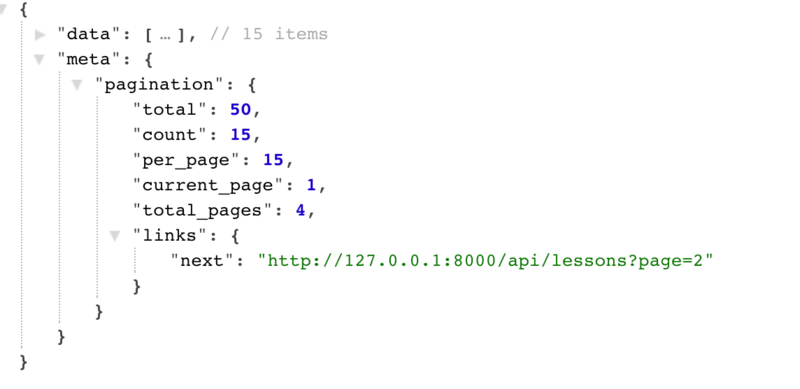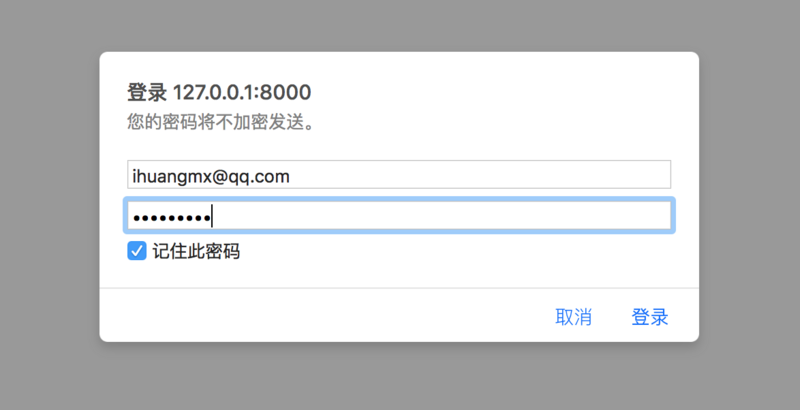Using Dingo Api
The database used in this paper is the same as the basic chapter, so it will not be repeated.
Initialization
install
$ composer require dingo/api:1.0.x@dev
register
/config/app.php 'providers' => [ Dingo\Api\Provider\LaravelServiceProvider::class, ],
In order to be able to customize the configuration, you first need to execute
$ php artisan vendor:publish --provider="Dingo\Api\Provider\LaravelServiceProvider" Copied File [/vendor/dingo/api/config/api.php] To [/config/api.php] Publishing complete.
You can see that there are more api.php configuration files, we can configure them in. env, some common configuration items:
/.env API_STANDARDS_TREE=vnd # vnd for public and commercial projects API_SUBTYPE=api-demo # Project abbreviation API_PREFIX=api # prefix API_VERSION=v1 # Version number used when no version is provided API_NAME="Laravel Api Demo" # Use API Blueprint command to generate documents API_STRICT=false # Strict mode requires clients to send Accept headers instead of the default version specified in the configuration file, which means that you can't browse the API through a Web browser. API_DEFAULT_FORMAT=json API_DEBUG=true # Open debug mode
Create a basic endpoint (what routes are called in the api) to test whether the configuration is successful
/routes/api.php $api = app('Dingo\Api\Routing\Router'); $api->version('v1', function ($api) { $api->get('test', function () { return 'It is ok'; }); });
Visit / api/test and return it as ok.
Use
Dingo's usage is similar to, or even simpler than, previous custom api s. First define the routing
/routes/api.php $api = app('Dingo\Api\Routing\Router'); $api->version('v1', function ($api) { $api->group(['namespace' => 'App\Api\Controllers'], function ($api) { $api->resource('lessons','LessonController'); }); });
If you want to view routes, you need to use
$ php artisan api:routes
Create Controller - You need to use Helpers trait.
/app/Api/Controllers/LessonController.php <?php namespace App\Api\Controllers; use App\Api\Transformers\LessonTransformer; use App\Http\Controllers\Controller; use App\Lesson; use Dingo\Api\Routing\Helpers; class LessonController extends Controller { use Helpers; public function index() { $lessons = Lesson::all(); // Collection is used to respond to a collection while binding a Transformer to format data return $this->collection($lessons, new LessonTransformer()); } public function show($id) { // Although we are not returning json, dingo will automatically convert return Lesson::findOrFail($id); } }
Create the corresponding Lesson Transformer
/app/Api/Transformers/LessonTransformer.php <?php namespace App\Api\Transformers; use App\Lesson; use League\Fractal\TransformerAbstract; class LessonTransformer extends TransformerAbstract { public function transform(Lesson $lesson) { return [ 'title' => $lesson['title'], 'content' => $lesson['body'], 'is_free' => (bool) $lesson['free'] ]; } }
Visit api/lessons/3 and the results are as follows

As you can see, Dingo automatically converts the response data into json, but we still need to format it.
public function show($id) { $lesson = Lesson::findOrFail($id); return $this->response->item($lesson, new LessonTransformer()); }
Now you can get the formatted data

Like Laravel, paging can also be used
public function index() { $lessons = Lesson::paginate(15); return $this->response->paginator($lessons, new LessonTransformer()); }
15 pieces of information and page information will be returned

When a request goes wrong, Dingo automatically handles it for us.

You can also customize
public function show($id) { $lesson = Lesson::find($id); if(!$lesson){ return $this->response->errorNotFound("FALSE id"); } return $this->response->item($lesson, new LessonTransformer()); }
give the result as follows

Combining simple authentication
We can add our own authentication functions to Api, such as HTTP basic authentication. First, create a test user
$ php artisan tinker >>> $user = new \App\User(); >>> $user->name = "zen" >>> $user->email = "ihuangmx@qq.com" >>> $user->password = bcrypt("123456") >>> $user->save() => true
Add Laravel's own middleware to the controller
public function __construct() { $this->middleware('auth.basic'); }
Now you will be prompted to enter a username and password when accessing, where the username refers to the mailbox.
